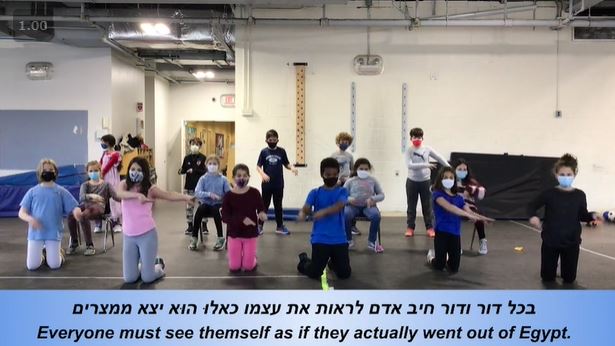How can we expect ourselves to imagine that we ourselves were freed from bondage in Egypt? How can this story become part of the fabric of who we are?
MARCH 31, 2021
JewishBoston
בְּכָל דּוֹר וָדוֹר חַיָב אָדָם לִרְאוֹת אֶת עַצְמוֹ כְּאִלוּ הוּא יֶָָצֶָא מִמִּצְרַָים
“In every generation, a person must see themselves as if they left Egypt.”
The Haggadah describes the obligation of each person that they must see themselves as if they themselves experienced the Exodus and its miracles. Not only are we obligated in the retelling, or the remembering, or the relearning, it must be personal.
How, though, can we expect ourselves to imagine that we ourselves were freed from bondage in Egypt? Today we enjoy the comforts and technologies that set the 21st century apart from the trials that ancient Israel faced. How can this story become part of the fabric of who we are? One answer is that we look for creative ways to tell the story so that we integrate it into our identities, our bodies, our hearts and minds. One way we do this is through movement and song, like this wonderful video of our fourth graders accompanying the JCDS original melody for “B’chol Dor VaDor” with dancing and sign language.
Another is through a deep dive into the texts of the Haggadah as we learned through the fourth grade milestone of last week, when they showcased their deep study of Ha Lachma Anya, Vehi Sheamda and B’Chol Dor V’Dor.
Another approach to making this ageless story personal is to immerse our students in experiential learning opportunities, such as our first-ever “Pesach Palooza.” This year we took our usual Chagigat Pesach all-school communal celebration outdoors. We have had the sixth to eighth graders working on creating activities and booths for younger students to interact with and enjoy. The stations are challenges or activities that open up and explore each of the 15 steps of the seder.
For example, karpas has become a dipping fishing game where students try to catch the correct vegetable for karpas. Kadesh is an obstacle course that teaches the four verbs of redemption from the Torah that inspired the four cups of wine. Another activity is matching pieces of original art to each of the four children. Name that tune is the activity for hallel. A race against the clock reviews the steps of making matzah. Students in K-5 will move through the palooza in small, socially-distanced groups as older students guide them through the experiences. The celebration will culminate in an all-school outdoor gathering where the whole community will sing Pesach songs, and the last song we will sing is the JCDS original tune for “B’chol Dor VaDor.”
By creating and participating in these innovative and fun learning experiences, students experience the Haggadah and the Pesach story in a fresh, personal way. They are immersed in creativity, whole-body participation and community as we celebrate together.
This year is a particularly challenging one for some, as many families are still not able to gather as they usually do for the holiday, but despite these challenges, the story of the Jewish people’s redemption from slavery can be told and experienced in new and creative ways. We are so proud of our students that they rose to the challenge, working together to not only share the narrative of Pesach, but to make it real and personal to every student at JCDS.
Shira Deener is head of school at JCDS.
The School Sparks blog appears periodically by various writers among the JCDS educational team. Learn more about JCDS, Boston’s Jewish Community Day School.





